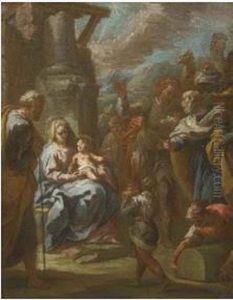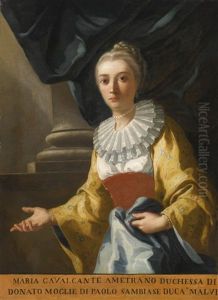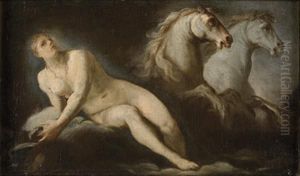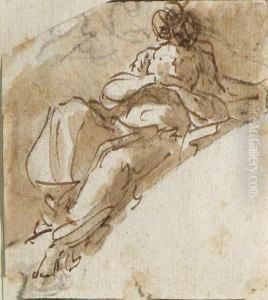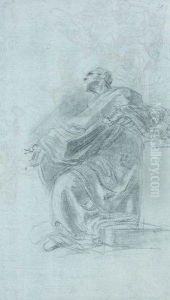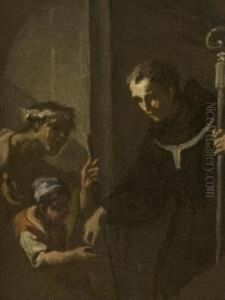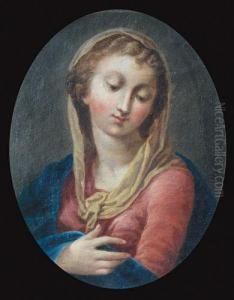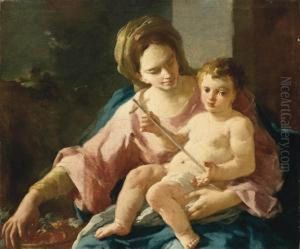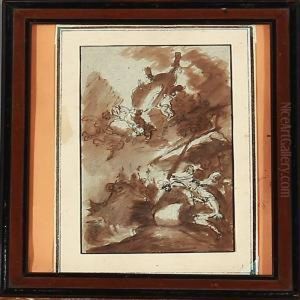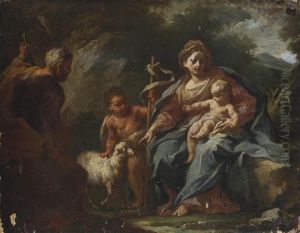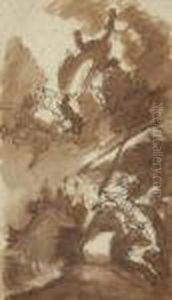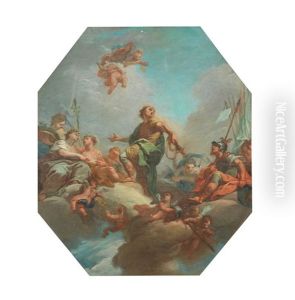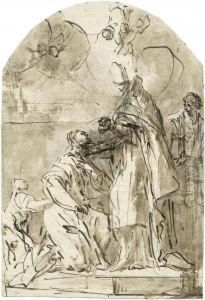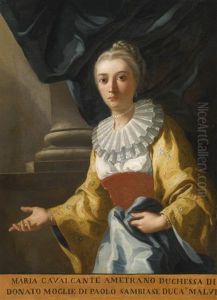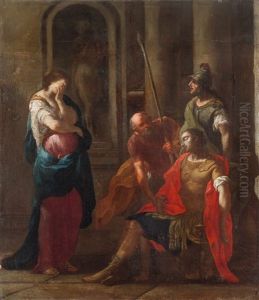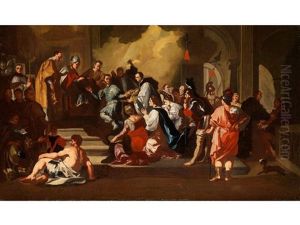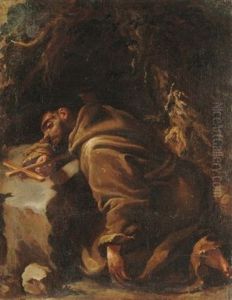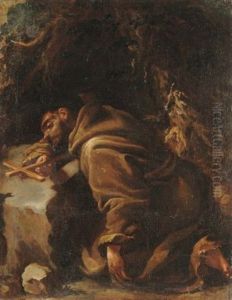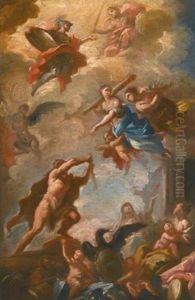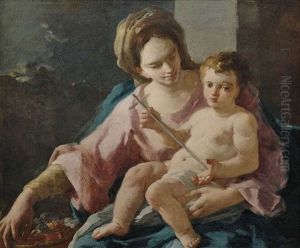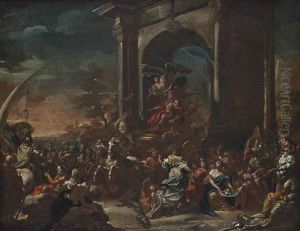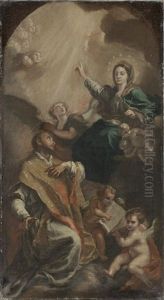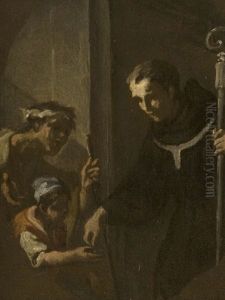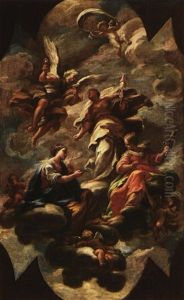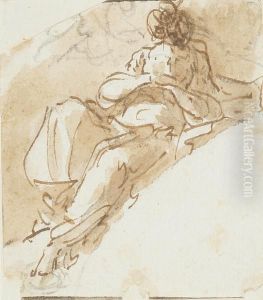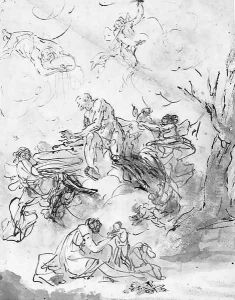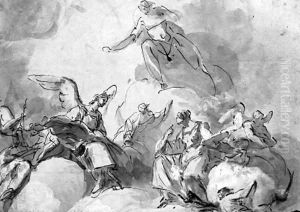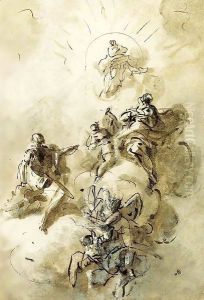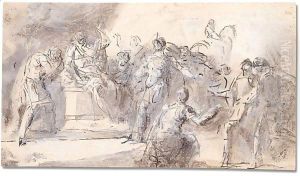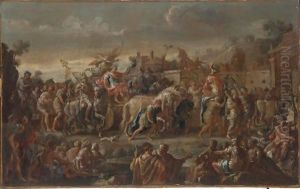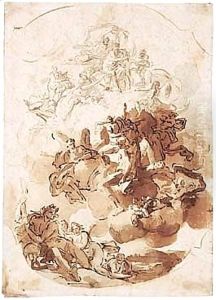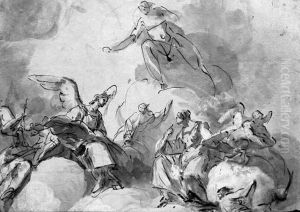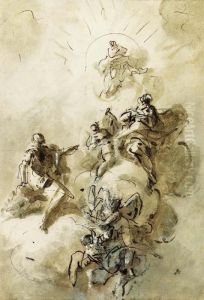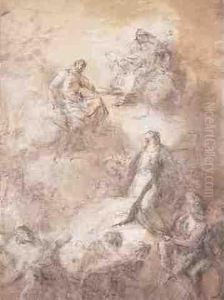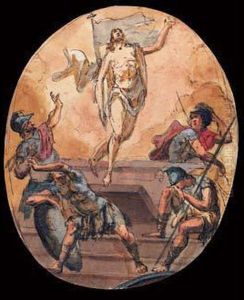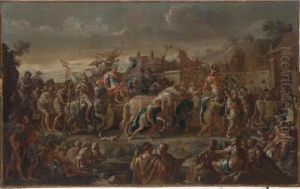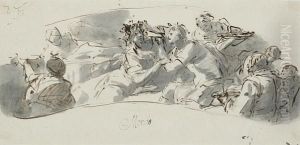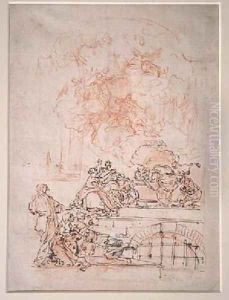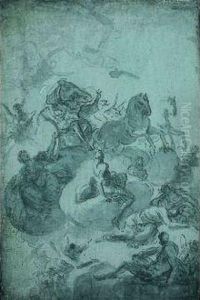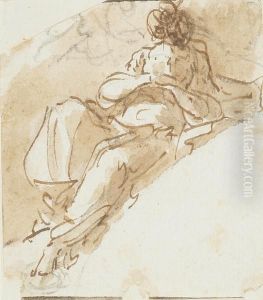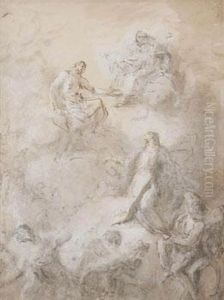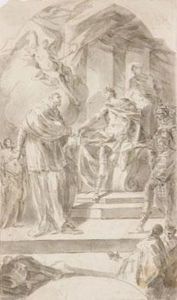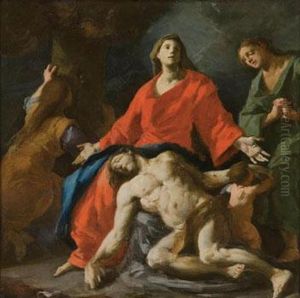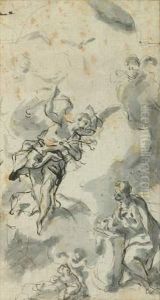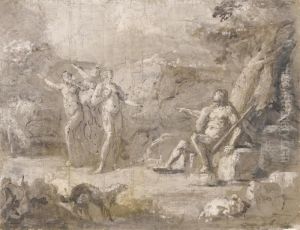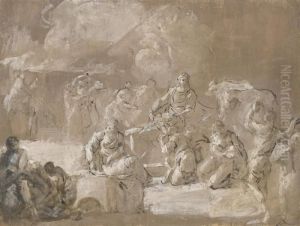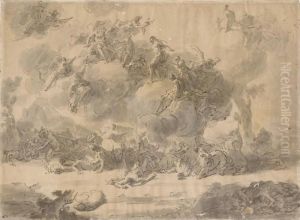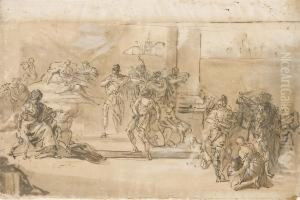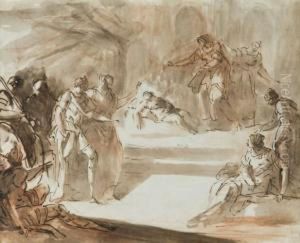Domenico Mondo Paintings
Domenico Mondo, also known as Michele Domenico Mondo, was an Italian painter and engraver born in 1710 in Naples, Italy. His artistic journey began under the tutelage of Francesco Solimena, an influential Baroque artist who played a significant role in the development of late Baroque and early Rococo art in Naples. Mondo's early work was influenced by Solimena's grandiose style and his skillful use of color and light.
Mondo's career spanned much of the 18th century, a period marked by significant changes in artistic styles and tastes. As Rococo gave way to Neoclassicism, Mondo adapted his style accordingly. He became known for his historical and mythological scenes, which often featured elegant figures and a clear, luminous palette that reflected the changing tastes of the time.
During his lifetime, Mondo received commissions from several prominent patrons, which included work for churches and nobility. His works can be found in various locations throughout Italy, with some of his frescoes and paintings still adorning the walls of Neapolitan churches and palaces.
Despite his contributions to the art of his time, Domenico Mondo is not as widely recognized as some of his contemporaries. His works have been studied in the context of the broader developments in Italian art, particularly within the Neapolitan school. Mondo passed away in 1794, leaving behind a legacy that, while overshadowed by more famous artists, remains an important part of the artistic heritage of the 18th century.
Unfortunately, due to the limited information available on Mondo, there are fewer details about his personal life and the full extent of his oeuvre. The study of artists like Mondo often relies on art historians to piece together their careers from surviving works, contemporary accounts, and historical records. Mondo's art reflects the transitions and complexities of an era that was rich in cultural and artistic evolution.
